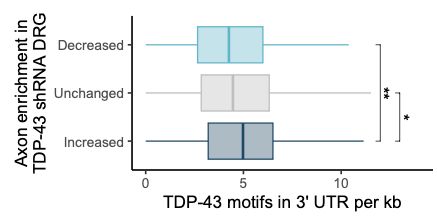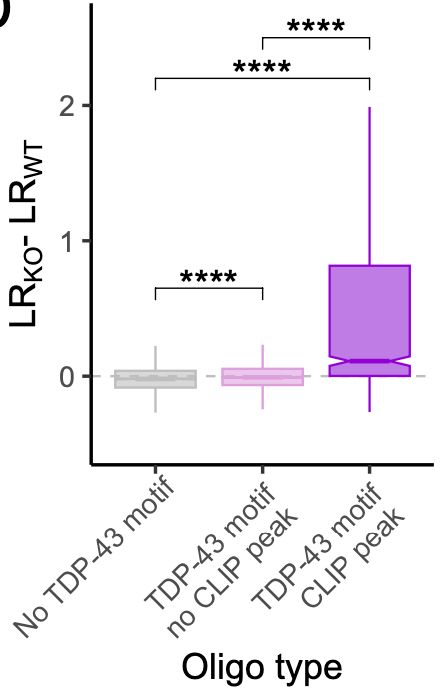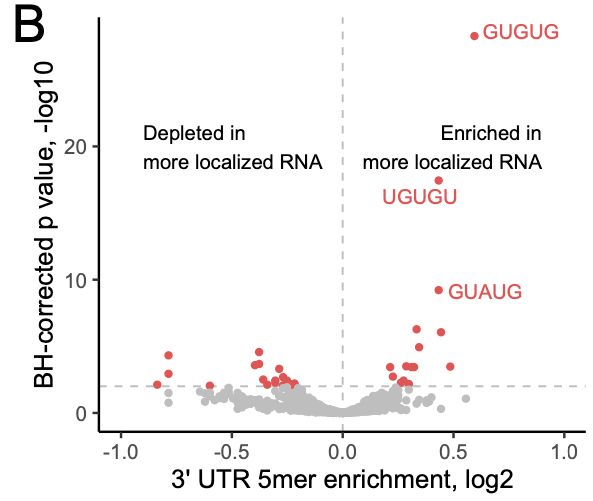
How does one review his paper if he’s infallible?
09.05.2025 00:20 — 👍 4 🔁 0 💬 1 📌 0@jmtali.bsky.social
RNA biologist at University of Colorado Anschutz Medical Campus http://www.taliaferrolab.com

How does one review his paper if he’s infallible?
09.05.2025 00:20 — 👍 4 🔁 0 💬 1 📌 0New @prelights.bsky.social post ! I'm happy to highlight @jmtali.bsky.social lab latest preprint prelights.biologists.com/highlights/t...
10.04.2025 12:44 — 👍 2 🔁 2 💬 0 📌 0We received notice that two F31s were terminated and submitted another F31 application two hours later. We keep on trucking, I guess.
02.04.2025 20:40 — 👍 6 🔁 1 💬 0 📌 0Thanks Junjie!
21.03.2025 16:29 — 👍 0 🔁 0 💬 0 📌 0Two updates with this project! First, this work is now published here: academic.oup.com/nar/article/...
Second, our software for identifying 8-oxoguanosine via RNAseq, PIGPEN, is now installable via bioconda: anaconda.org/bioconda/pig...

Thanks Mike! I looked into this a while back, and I am a direct patrilineal descendant of this guy: www.findagrave.com/memorial/133.... Blacksmithing skills got lost somewhere along the way though.
03.03.2025 17:41 — 👍 1 🔁 1 💬 1 📌 0Thanks Manny!
03.03.2025 17:33 — 👍 1 🔁 0 💬 0 📌 0...the unnecessary loss of time, expertise, and money. In short, it is the opposite of increased efficiency.
03.03.2025 16:00 — 👍 4 🔁 0 💬 0 📌 0...from the people in the lab doing the experiments to the staff that oversee compliance with regulations to ensure thoughtful stewardship of hard earned taxpayer money. Wild, unpredictable changes to the system result in turnover of these key personnel, resulting in...
03.03.2025 16:00 — 👍 3 🔁 0 💬 1 📌 0Finally, one more comment given recent events. All this work, which may one day lead to cures for ALS, relies not just on federal funding, but on a *stable* funding system, including indirect costs. Those funds pay the salaries of people that are indispensable to this effort...
03.03.2025 16:00 — 👍 3 🔁 1 💬 2 📌 0
If we replace wildtype TDP-43 with an ALS mutant TDP-43, we again see that the same RNAs become aberrantly neurite-enriched. So this could be happening in ALS patient cells, but whether it makes contributions to patient phenotypes is another question for another day.
03.03.2025 16:00 — 👍 2 🔁 0 💬 1 📌 0
Does any of this have anything to do with ALS? Maybe. We see the same RNA localization defects happening in primary mouse motor neurons and human iPS-derived motor neurons upon TDP-43 loss.
03.03.2025 16:00 — 👍 0 🔁 0 💬 1 📌 0


260mers that drove TDP-43-dependent localization and were bound by TDP-43 in vitro also showed TDP-43-dependent changes in stability, directly linking all three processes. All of these qualities were eliminated if TDP-43 motifs in the 260mers were eliminated.
03.03.2025 15:59 — 👍 0 🔁 0 💬 1 📌 0
OK, so *how* is TDP-43 doing this? TDP-43 negatively regulates RNA stability and recent work has linked RNA localization and stability. So is this what's going on? To test this we measured the stability of the same ~10k reporters with and without TDP-43 using SLAM-seq.
03.03.2025 15:59 — 👍 1 🔁 0 💬 1 📌 0


Sure enough, 260mers that have TDP-43-dependent localization activity are directly bound by TDP-43, and mutation of TDP-43 motifs within them abrogates both binding and activity.
03.03.2025 15:59 — 👍 0 🔁 0 💬 1 📌 0
OK so we have 260mers that have TDP-43-dependent RNA localization activity. But are they actually bound by TDP-43? To test this, we measured the TDP-43 affinity for the exact same ~10k 260mer RNAs in vitro, allowing us to directly relate binding to activity.
03.03.2025 15:59 — 👍 0 🔁 0 💬 1 📌 0

So what distinguishes these bound/active motifs from unbound/inactive motifs? Secondary structure. Bound motifs are significantly more single-stranded. We can predict whether or not a TDP-43 motif regulates RNA localization simply by looking at its secondary structure character.
03.03.2025 15:58 — 👍 1 🔁 1 💬 1 📌 0

Only some TDP-43 motifs are actually occupied by TDP-43 in cells, and only those motifs made RNAs TDP-43-sensitive. Further, mutation of those motifs abolished activity, while mutation of other non-occupied motifs had no effect.
03.03.2025 15:58 — 👍 0 🔁 0 💬 1 📌 0
We found specific pieces of UTRs that were sufficient to make the localization of reporters sensitive to TDP-43. Interestingly, these often overlapped perfectly with known TDP-43 CLIP sites. Their activity was also abolished by mutated TDP-43 motifs within them.
03.03.2025 15:58 — 👍 0 🔁 0 💬 1 📌 0
To answer that, we used an MPRA where we chopped up those UTRs into ~10k 260mer RNA sequences. We then incorporated each of those into a reporter and tested the localization of those reporters with and without TDP-43.
03.03.2025 15:57 — 👍 1 🔁 0 💬 1 📌 0
Further, the 3' UTRs of the 3 exemplar RNAs were sufficient to make the localization of a reporter RNA similarly dependent upon TDP-43. But what about these UTRs wast10
making them TDP-43-sensitive?


TDP-43 binds GU-rich kmers. 3' UTRs of RNAs that became more neurite-enriched upon TDP-43 loss were very strongly enriched in these motifs as well as CLIP-defined TDP-43 binding sites, suggesting that they are being directly regulated by TDP-43.
03.03.2025 15:57 — 👍 0 🔁 0 💬 1 📌 0

Interestingly, many RNAs became *more* neurite-enriched without TDP-43. This is exemplified by 3 RNAs, Diras1, Ksr2, and Wasf3. Although the total cellular level of these RNAs stays ~ the same, in neurites they go up 20-fold without TDP-43.
03.03.2025 15:57 — 👍 0 🔁 0 💬 1 📌 0

Interestingly, many RNAs became *more* neurite-enriched without TDP-43. This is exemplified by 3 RNAs, Diras1, Ksr2, and Wasf3. Although the total cellular level of these RNAs stays ~ the same, in neurites they go up 20-fold without TDP-43.
03.03.2025 15:56 — 👍 1 🔁 0 💬 1 📌 0
To ask how TDP-43 regulates RNA localization, we then analyzed neurite enrichments changed with and without dox-inducible loss of cellular TDP-43.
03.03.2025 15:56 — 👍 0 🔁 0 💬 1 📌 0
We used a compartmentalized culture system to separate cell bodies and neurites. By profiling the RNA content of each fraction using RNAseq, we learn the relative abundance of each RNA in neurites vs. soma.
03.03.2025 15:56 — 👍 3 🔁 0 💬 1 📌 0First, I must note that all this work was NIH funded. We are very grateful for all taxpayer money and strive to be good stewards of it. The recent actions taken by the govt threaten progress toward cures of countless diseases and the livelihoods of countless talented people.
03.03.2025 15:55 — 👍 11 🔁 3 💬 1 📌 0
This has been the work of many people, most notably Charlie Moffatt and Ankita Arora with help from the labs of Daniel Dominguez and Holger Russ. www.biorxiv.org/content/10.1...
03.03.2025 15:55 — 👍 9 🔁 2 💬 1 📌 0